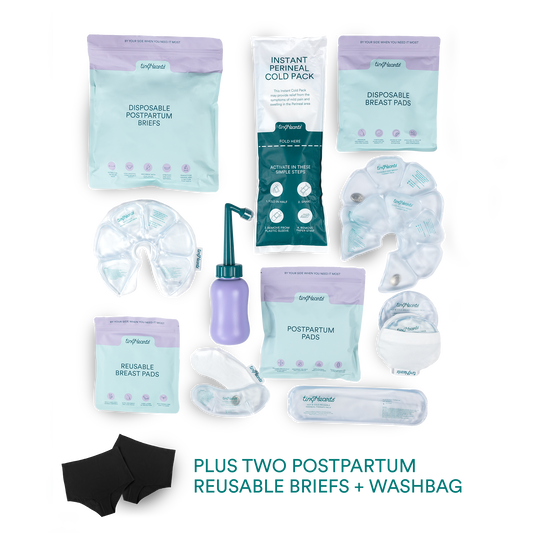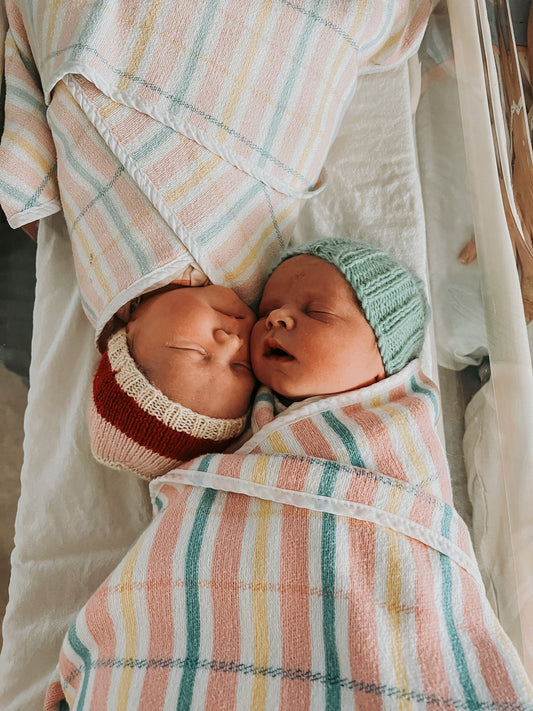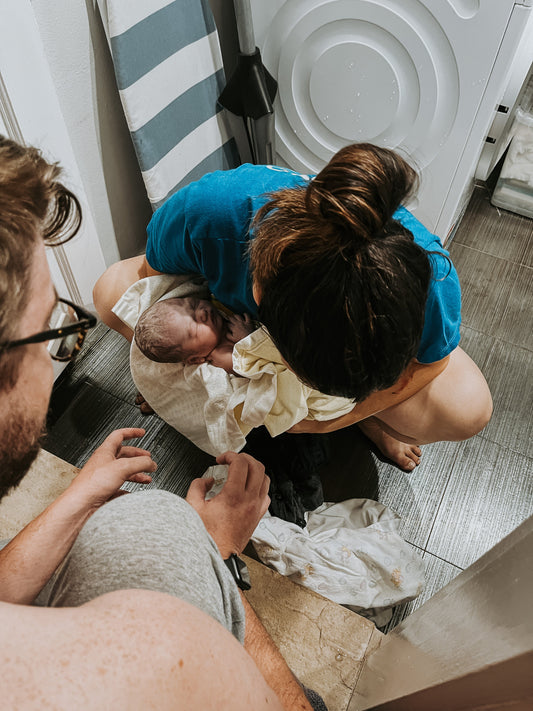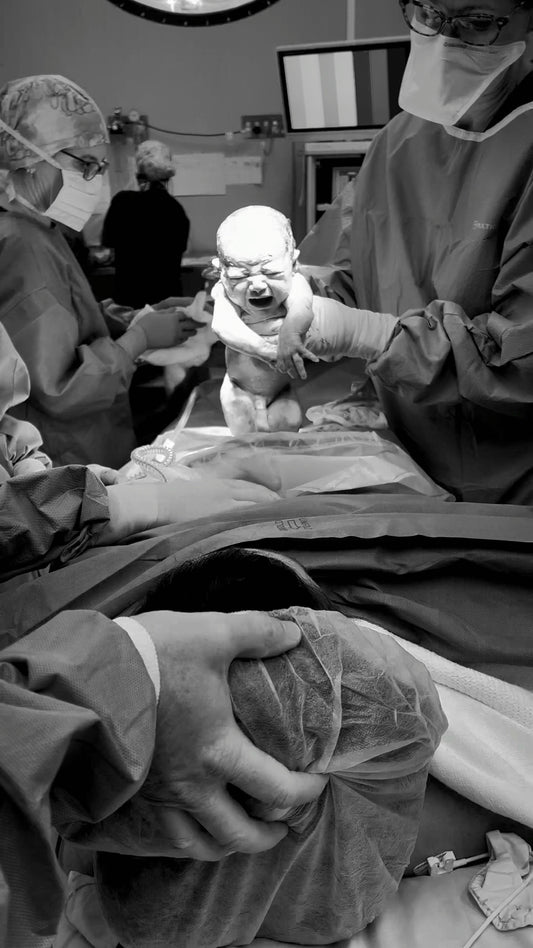Once your little ones are on the move, it may seem they will constantly be running into things, tripping over or injuring themselves in one way or another. At times, it can become overwhelming, so we've created this blog all about the most common household injuries you'll see as a mama, papa or carer, and what equipment you'll need to treat them.
Minor wounds [like grazes and small cuts]
These are some of the most common injuries you will be dealing with as parents or carers. Thankfully, most are self-limiting and won't require a trip to the doctor or hospital.
To treat most mild wounds, you may need:
- Gauze x 2 for applying direct pressure and cleaning the area
- Tweezers for removing any gravel that doesn't come out by wiping with gauze
- Saline or some water for cleaning the area
- Bandaid or adhesive pad for covering the area to protect against infection
- Bandage for maintaining direct pressure if the wound is bleeding
- Cool pack for pain relief and to help reduce any immediate swelling to the area

Mild head injuries
When your little ones start sitting, they might lose their balance from time to time, fall over and bump their head on the floor. Once they start crawling, they might begin exploring and bump their head on lots of new things, like the coffee table. When they start walking, the world becomes a whole lot bigger, and they often don't realise how tall they are in comparison to things around them, like the dining table, so they'll go to walk under it, not realising they won't fit and will bump into it with their head instead.
These are all examples of when little ones might sustain a mild head injury, but it's important to know the signs and symptoms of a mild versus a moderate-severe head injury because moderate-severe head injuries require quick recognition and prompt medical attention.
To treat most mild head injuries, you may need:
- A cool pack for applying to bub's head for pain relief
- Instant ice pack to keep in your handbag in case these injuries occur outside of the home
- Gauze for applying direct pressure in the case that the bump is slightly bleeding
- Bandage for keeping direct pressure and the gauze on the wound
- Butterfly closures incase the wound is gaping
- A medication tracker in case you give your little one some paracetamol

Burns
82% of burns in little ones occurs in the home, and of those burns, 82% occur in the kitchen or bathroom. Burns can have lifelong impacts and cause severe pain, so they must be treated quickly and correctly and get immediate medical attention. The immediate first aid treatment for mild, moderate or severe burns is all the same; cool running water for 20 minutes. After that, you'll need to cover the burn.
To cover the burn at home, while waiting for the ambulance, you may need
- A non-stick dressing
- Plastic cling wrap
Bites
In Australia, there are lots of things that may commonly bite or sting us, such as ants, mosquitos, bees and sandflies. Whilst most of these are mild and can be managed at home, they may cause some mild pain to your little one.
To treat land-based bites, you may need:
- A cool pack or instant ice pack in case the bite happens when you're out and about
- A bandaid or adhesive pad to cover the area to prevent infection
- Elastic bandage to keep the pad in place
- A medication tracker for monitoring any medications you give bub, such as antihistamines
Sore eyes from contamination
We've all been there; sunscreen in the eye, shampoo in the eye, dirt in the eye, sand in the eye, eyelash in the eye. All mild and self-limiting, but all requiring treatment to minimise pain and further injury to the eye.
To treat your little one who has something in their eye, you may need:
- A clean eye cup to fill with water and gently rinse the eye
Boo-boos and sore spots
If your little ones are like mine, they might hurt themselves and have a mild boo-boo or spot that's a little bit sore, but hasn't left any visible injury.
In these cases, you may need:
- Some bandaids or boo-boo bandages
- A cool pack that helps with pain relief and comfort
- Snuggles + kisses
There are some other injuries that we see in little ones that aren't as common but still require treatment until bub receives medical attention or the ambulance arrives. Let's break them down below.
Broken bones
The most common place for little ones to break a bone is the wrist because we naturally put our hands out when we fall, and a lot of the time, it's also thanks to monkey bars. While kids have more falls than adults, their bones also don't generally break easily.
If your little one breaks a bone at home, you may need these items until they've received medical attention:
- A triangle bandage [to support them in a position of comfort]
- Gauze [to treat any mild wounds that occurred at the same time as the fall]
- Flexible splint board to support the fracture or injured arm or leg [but remember, only use this if it's going to support bub's position of comfort, not move them out of this position]
- Medication tracker for tracking any pain relief you've given them
Snake bites
While little ones being bitten by snakes is rare, it can [and does!] happen. For all land and sea snakes, you'll need to perform the pressure immobilisation technique to slow down the spread of venom. To perform the pressure immobilisation technique, you may need:
- An elastic bandage
- A pressure immobilisation bandage
- A triangle bandage or another elastic bandage to tie the limb to the body to stop it from moving
- A texta to mark the bite site on the dressing
Serious bleeding
If bub is involved in a more serious accident, they may sustain a more severe injury that causes serious bleeding. If your bub has serious bleeding, the goal is to apply direct pressure to slow down or stop the bleeding while waiting for the ambulance to arrive. While you can use anything absorbent and clean, if you've got a first aid kit, you could use:
- A triangle bandage for applying direct pressure and absorbing blood
- An elastic bandage for maintaining that direct pressure and keeping the bandage in place
- Gauze for applying direct pressure, which will also assist in absorbing any blood
- A sterile surgical pad for applying over the bandage in case it leaks through [because you never remove layers if they bleed through; instead, you keep adding layers]
Some other handy things to keep in your family first aid kit are:
- Alcohol cleansing wipes [to clean the area around the wound to remove things like blood or dirt to make sure the dressing/bandage will stick]
- Gloves in case you're dealing with blood or vomit
- Vomit bags to catch any vomit [I keep two of these in the car for when little ones suddenly feel sick in the car]
- Hand sanitiser for cleaning your hands before providing first aid
- A laminated copy of all important numbers such as 000 and poisons information hotline
- A pocket mask in case of needing to provide CPR breaths
- Paracetamol and ibuprofen for little ones [providing your first aid kit will be kept up high]
- Syringes for measuring medication
- Thermometer for monitoring bub's temperature if required
- Different sized bandaids or bandages for different sized wounds
- Multiple instant ice packs for when you need a cool pack instantly but don't have any on hand or any pre-cooled
While this blog talks about the most common [and some uncommon] injuries and illnesses, it's knowing what to do with that equipment that makes the most difference. We cover all of the above in our baby first aid course. And if you're wondering where to get all of this equipment, the majority of it is all in our family first aid kit.
I'd love to know, what else have you added to your family first aid kit and when did it come in handy?







